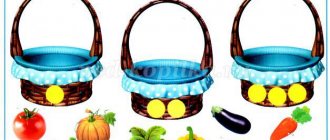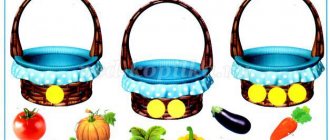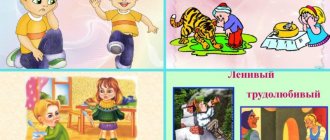Why do preschoolers need information about transport?
The full development of children can be achieved only by introducing them to the world around them. A child will always be interested in the question of what types of vehicles are there and why do people need them? It is not by chance that preschoolers are introduced to the classification of vehicles. This helps to enrich the vocabulary and consolidate the generic concept of “transport”. At the same time, they achieve the presence of other points:
- The preschooler will learn to compare different types of transport and find some common or distinctive features in them.
- If there is reason, he can unite individual representatives into a single group and somehow classify them.
- You can teach a preschooler the rules of behavior that involve being in one or another type of vehicle.
All this will contribute to the development of personal qualities in the preschooler. This will contribute to the development of thinking, responsibility, and criticality.
Didactic game "Transport"
Didactic game “Number. Sign. Subject" on the lexical topic "Transport"
The game is intended for children aged 4-6 years with severe speech impairments, as well as for children of preschool and primary school age to develop the lexical and grammatical structure of speech.
Didactic game “Number. Sign. Subject" can be used both in individual and subgroup lessons with children.
Target:
This set of games will help an adult teach a child:
- agree nouns with numerals and adjectives in gender, number, case;
- select qualitative, relative, possessive adjectives for nouns;
- use ordinal numbers in speech, coordinate them with nouns and adjectives in gender, number, case;
- activate mental activity, associative thinking;
- make comparative sentences with the conjunction “a”.
Material for the game:
cards with game tasks in two subjects of the same lexical group; playing field and cut cards for independent selection and compilation of a plot series; sets of numbers.
Game description:
Game with ready-made models : each table contains tasks for two subjects of the same lexical group for a larger educational load. At the beginning of the game, the child needs to be clearly shown how associations can be used to indicate the characteristics of objects. For example, how can you depict a bitter taste, show the hardness, softness, juiciness of vegetables, color and shape.
Below are ready-made game cards:
- five yellow taxis;
- three mail helicopters;
- seven cargo planes;
- two large buses;
- nine passenger trains;
- two fast ships.
The game requires compliance with the following steps:
- Name a word denoting a number (what number? - seven).
- Name a word denoting an object (what is it? - airplane).
- Agree the noun with the numeral in gender (how many planes? - seven planes).
- Name the words denoting the attribute of an object, coordinate them with numerals and nouns in gender, number (seven airplanes (which ones?) - cargo).
- Agree the numeral with the adjectives and nouns in gender and number. (Say in complete sentences, starting with the number. – Seven cargo planes.)
- Using the same principle, consider another subject of the lexical group - a bus.
- Make comparative sentences with the conjunction “a”. (There are seven planes, two buses, etc.)
Game with cut cards : played on the same principle as with ready-made models. Only here the child takes an active position and is given more independence.
First, you should invite the child to choose an item on a lexical topic and place it in a sector with an asterisk, then a number (place in the first sector) and select adjectives in the form of picture symbols (place in the longest sector of the playing field). The symbol pictures are first reviewed and what they mean is explained.
To better understand the progress of the game with cut cards, a sample is provided below.
Using the didactic game “Number. Sign. Subject" children will quickly master the skills of agreeing adjectives, nouns and numerals in gender, number, case; will learn to select adjectives for nouns and develop their associative thinking.
The development of associative thinking has a positive effect on the process of memorizing and reproducing necessary information.
On our website you can find other educational games from the “Number” series. Sign. Item". To do this, follow the highlighted link .
We wish everyone success.
SPEECH DEVELOPMENT. LEXICAL TOPIC "TRANSPORT".
SPEECH DEVELOPMENT. LEXICAL TOPIC "TRANSPORT".
CHILDREN SHOULD KNOW OBJECTS: car, transport, bus, metro, tram, trolleybus, train, plane, ship, helicopter, boat, truck, driver, pilot, captain, traffic rules, garage, parking, stop, sidewalk, rails, road , rocket, controller, conductor, station, airport, port, pier, airfield, wheel, steering wheel, door, glass, headlights, hood, trunk, pump, driver, boat, ticket, rails, sleepers, rocket, train, dump truck, taxi , cart, bicycle, motorcycle, tractor, combine, subway, accident.
Classifications of games according to traffic rules
The game form of working with traffic rules in kindergarten can be implemented in five types, each of which relates to a specific topic and has a specific educational task.
Educational or didactic games
Games of this type are used for:
- familiarization with new material (for example, when examining road signs, older preschoolers become familiar with the purpose of each of the four groups - warning, prohibiting, indicating and prescriptive);
- practical application of knowledge, skills and abilities (for example, in the older group, having become familiar with the types of signs, children put together a puzzle in which one part is a sign, and the second is a picture demonstrating the situation on the road).
For didactic games the following are important:
- conditions, that is, rules;
- designated end result;
- verified game actions.
The topic of traffic rules can be presented in two types of didactic games: those focused on the essence of actions and those aimed at material that is directly related to building the plot of the game.
In didactic games, children not only get acquainted with new material, but also consolidate acquired knowledge, skills and abilities








